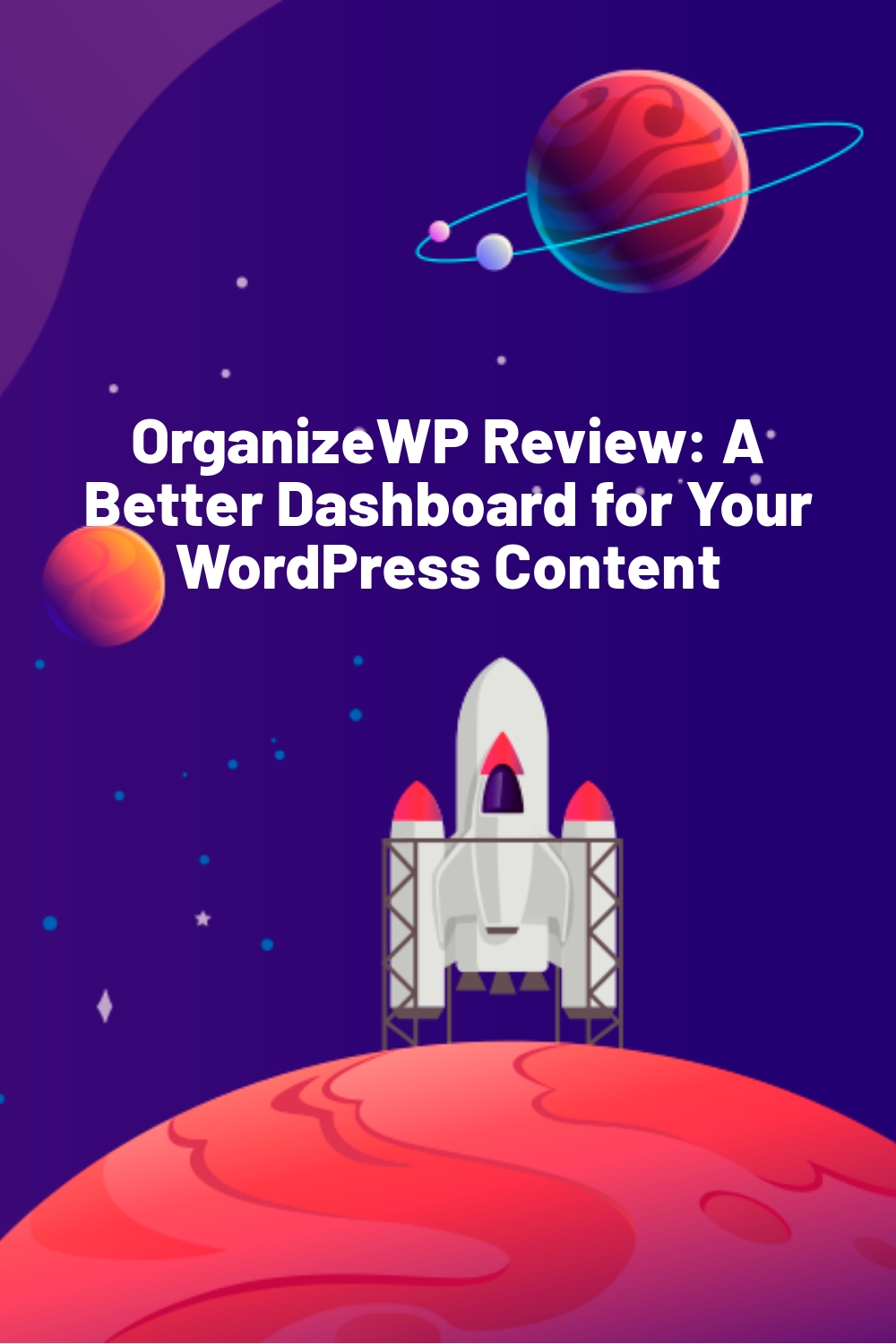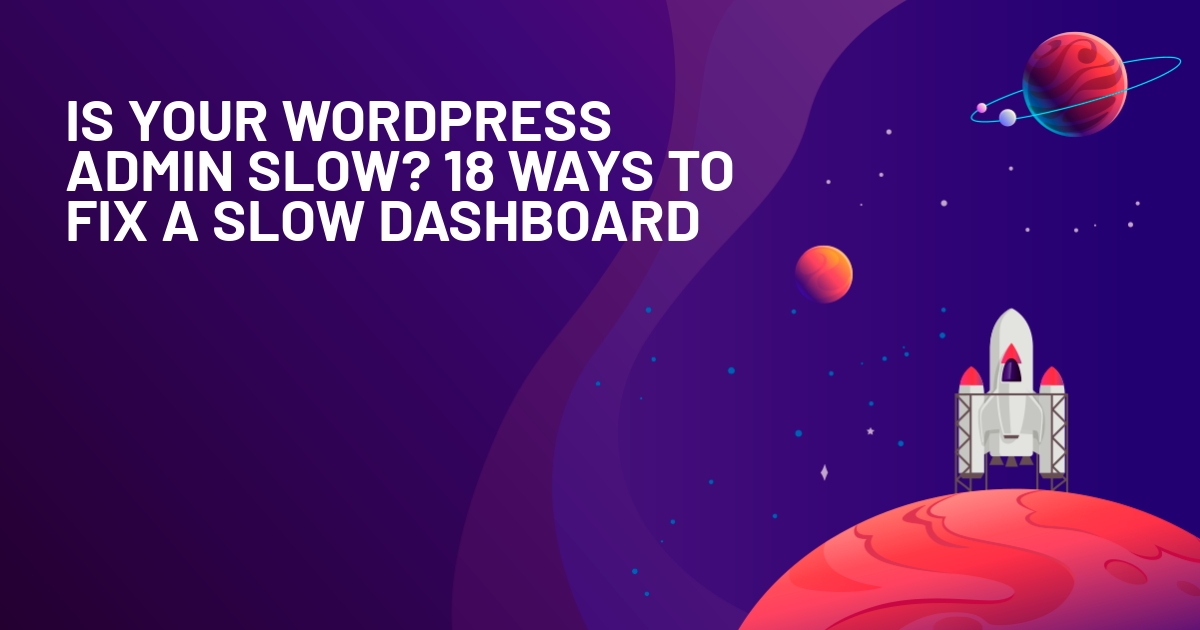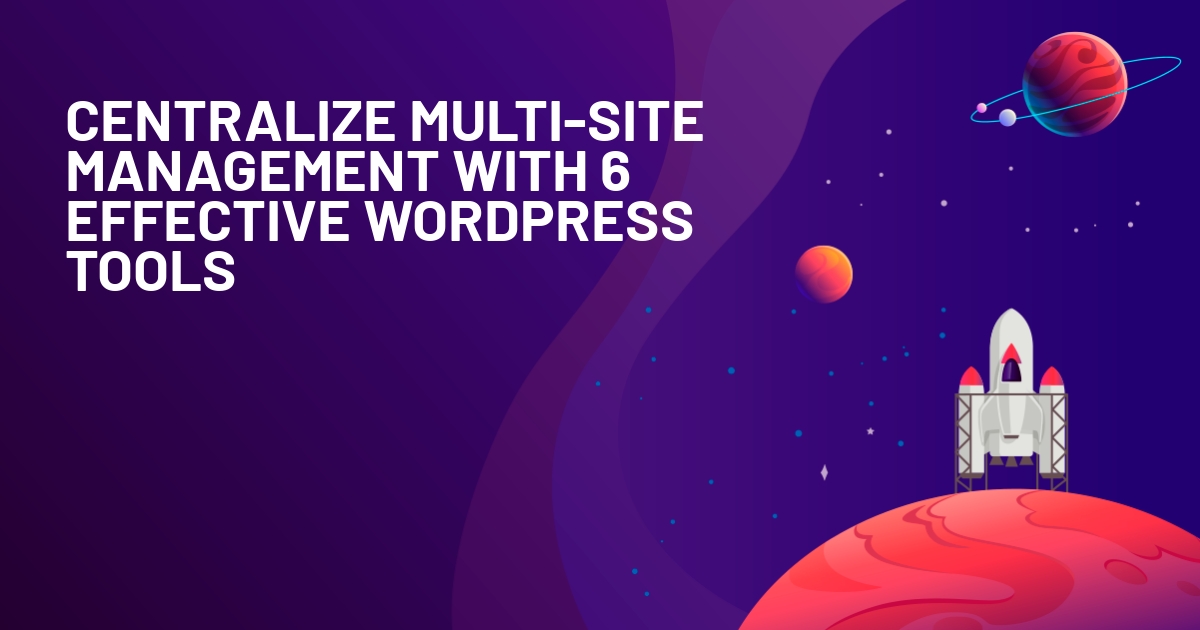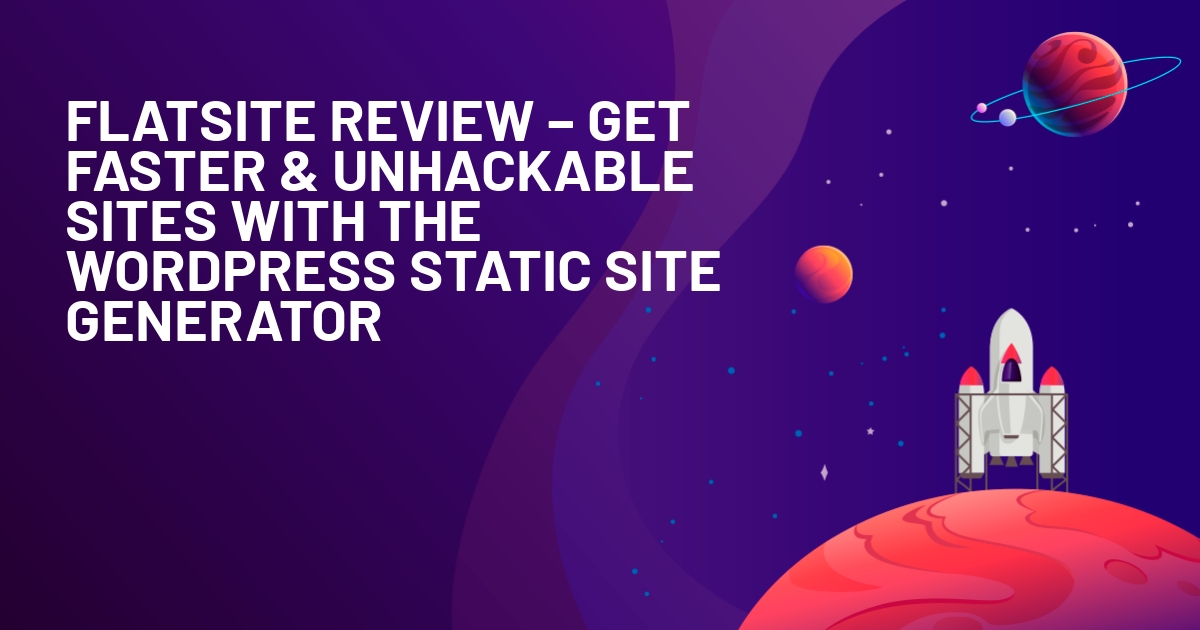WPLift is supported by its audience. When you purchase through links on our site, we may earn an affiliate commission.
OrganizeWP Review: A Better Dashboard for Your WordPress Content
A few months ago, I introduced my girlfriend to WordPress to help her create a portfolio website.
If you’ve ever helped a friend use WordPress for the first time, you can probably guess what happened next:
Questions and confusion about how to use the WordPress dashboard.
While the WordPress dashboard might seem intuitive enough if you’ve been using it for years, people who lack that familiarity often find some parts confusing, which is why I’m excited to share this OrganizeWP review with you today.
OrganizeWP aims to simplify how the WordPress dashboard handles content by creating a single unified area for all your content – posts, pages, custom post types, etc.
It’s got a really unique approach that I think a lot of people will prefer (maybe including your clients, if you build WordPress sites for a living).
Keep reading my hands-on OrganizeWP review and I’ll take you through all the features and show you how everything works.
OrganizeWP Review: The Feature List
Basically, OrganizeWP takes all the different content types in WordPress and groups them together into a single unified interface.
So where before you had different sections for posts, pages, and any custom post types that you were using, now you get a single interface for all your content. You can also split out certain content – like landing pages – to make it more accessible.
It might be easier to understand with some screenshots, so let’s look at a before and after.

Article Continues Below
Here’s a before site – you can see how there are different sections for posts, pages, and several custom post types (Services, FAQ, Locations, and Team):

For a lot of users, having their content split into so many different areas can feel overwhelming.
Once you set up OrganizeWP, everything sits inside a single Content area. Inside that area, it’s divided into logical areas and users can also search all content types:

I’ll go into a lot more detail about what this interface lets you do in the hands-on section – but this should give you a good idea of what OrganizeWP is doing.
Hands-On With OrganizeWP
Now, let’s go hands-on and I’ll take you on a more detailed tour of the OrganizeWP interface.
No More Separate Areas – It’s Just “Content”
As you saw above, OrganizeWP groups the different post types on your site – posts, pages, etc. – into a single Content area in your WordPress dashboard:

In that unified Content area, you get a bunch of options for how to organize it in the most convenient way for your workflows.
First up, you can choose whether or not to show specific post types in the content list (more on working with post types and taxonomies soon). This is helpful because you might not want every post type visible, especially if you’re building sites for clients and they might break something.
If a post type has lots of content – like your blog posts – you can hover over it and click List “Post Type” to see a full list of all content in that post type:

You can also add standalone pages to either the Standalone Pages sidebar, or as part of your main content outline.
In the Standalone Pages sidebar, you can create different groups to organize your standalone pages.
For example, you could create a special “Landing Pages” group to contain all the landing pages you’ve built with Elementor. Or you could create a “Sales” group to manage all of the dedicated sales pages for your WooCommerce store:

Finally, you can use drag-and-drop everywhere. That is, you can use drag-and-drop to change the order of items in your main outline (you can also make items child items by dragging them). But beyond that, you can also drag items between your content outline and your Standalone Pages:

Personally, I really do find this interface to be convenient. And I think if you’re creating a website for a non-technical user, they’ll also like this, as well as the next feature I’m going to discuss…
Unified Content Search and Content Creation
In the normal WordPress dashboard, you can only search for content post type by post type. That is, you first have to search “Pages” and then search “Posts” and so on.
Now, if you’re experienced with WordPress, you might automatically remember exactly which post type is associated with each piece of content on your site. But for a lot of casual users, I think it’s tough for them to remember whether something is a “Post” or a “Page”.
OrganizeWP fixes this issue by giving you a unified content search. If you enter a search term in the search box, it will show you content from any post type that matches that search. You can also filter by different statuses – like published vs draft:

What’s more, the search uses a really seamless Ajax approach, which means you don’t need to reload the page for each search.
OrganizeWP also uses this same unified approach for content creation. If you click Add New, you can choose any post type from the drop-down:

Creating a New Custom Post Type or Taxonomy
In addition to helping you manage and organize existing custom post types and taxonomies, OrganizeWP can also help you create new post types and taxonomies to organize your content.
When you open the Manage interface for either post types or taxonomies, you’ll get an option to add a new one at the bottom:

You can then customize the settings for that content type. For example, you can:
- Control the URL structure, including making it a child URL of an existing content type
- Choose what that post type supports. For example, whether or not you can add a featured image
- Select associated taxonomies

OrganizeWP Pricing
OrganizeWP offers two pricing plans, both of which are for a yearly license with all features:
- Standard – $49 for use on one site.
- Plus – $99 for use on unlimited sites
If you want to renew your license after the first year, you’ll get a 20% discount.
Final Thoughts on OrganizeWP
There are a lot of WordPress plugins that are just tweaking something that’s already been done a million times by other plugins. OrganizeWP is not doing that – it’s implementing an approach that I’ve never seen before, which is always cool.
More importantly, if you’re building a site with lots of different content types, I think the way it approaches organizing content really is more convenient than the default WordPress system for a couple of reasons:
First, being able to create groups of standalone pages is really nice. You probably have certain pages that require way more attention than other pages, so being able to collect those pages in one spot makes them easier to access. If you’re building client sites, it also gives you a way to make pages that are important to that client more accessible.
Second, the unified approach to content is just way simpler, especially if you’re creating a site for clients or a non-technical user. Trying to explain custom post types to users is confusing, especially when you get to the difference between uppercase “Posts” and lowercase “posts”.
OrganizeWP gets rid of that confusion by making everything just “Content”. Then, you can use clear names and drag-and-drop to organize everything in a way that makes sense for you (or your client).
Additionally, I think it’s super convenient to have a unified content search for all your content types because it eliminates the need to remember which post type a piece of content is.
Overall, if you build sites for clients, or if you just want a better way to organize your own site’s content, definitely give OrganizeWP a look.










